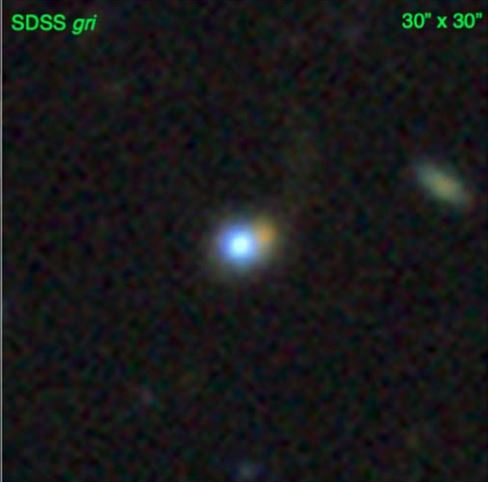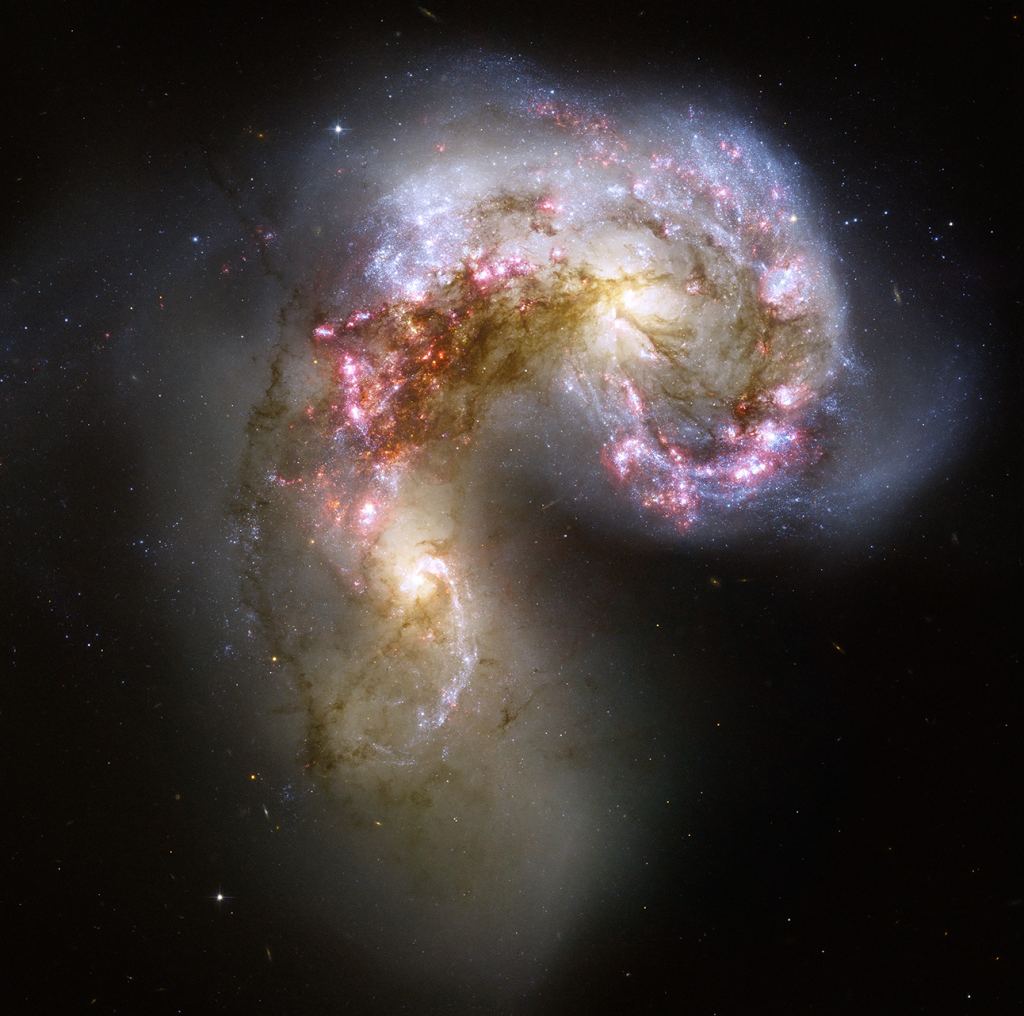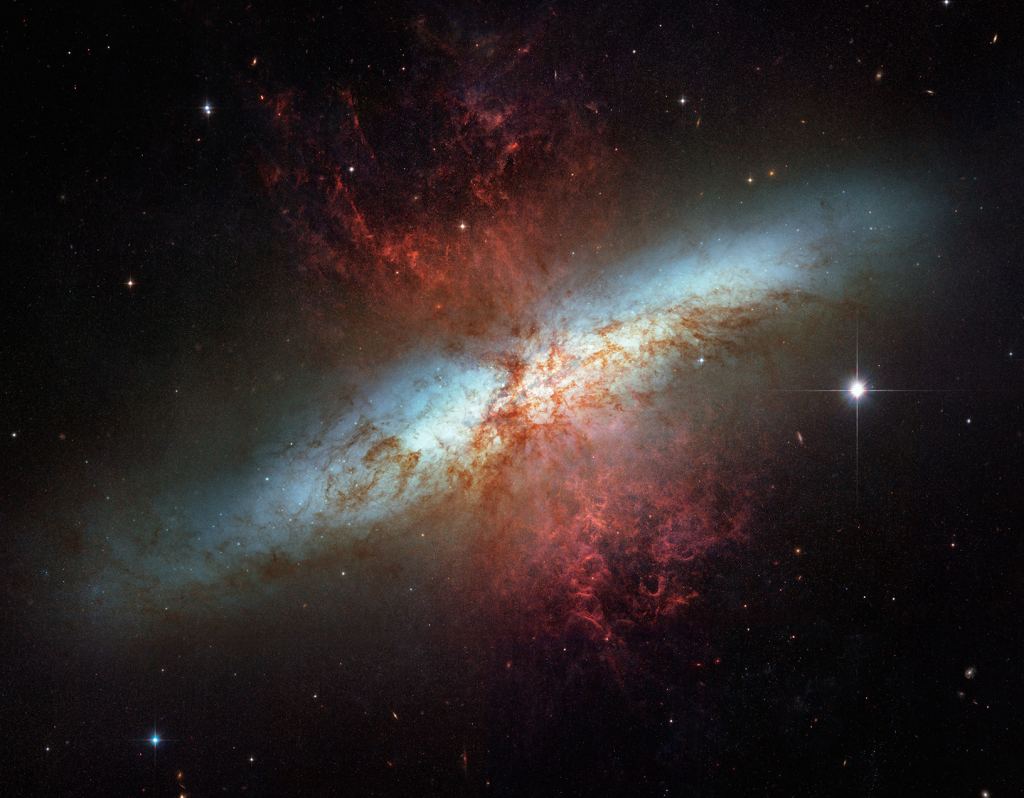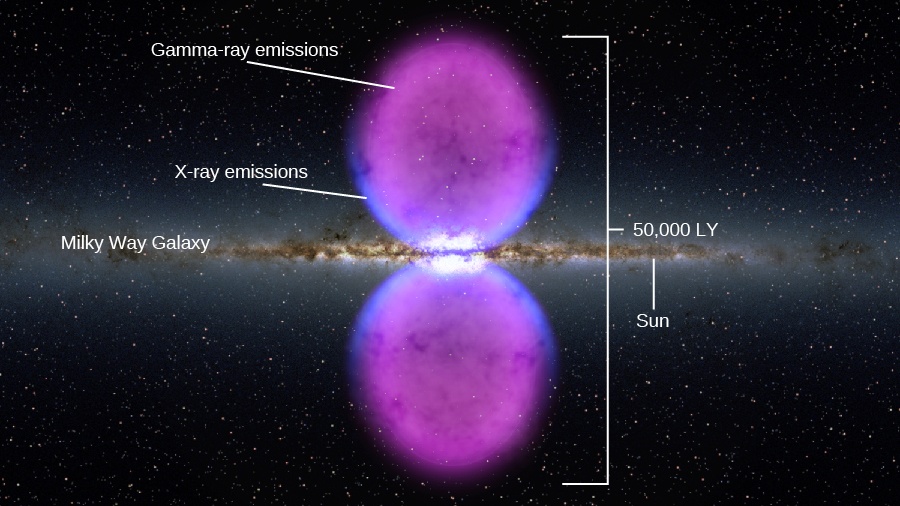A monster lurks at the heart of many galaxies – even our own Milky Way. This monster possesses the mass of millions or billions of Suns. Immense gravity shrouds it within a dark cocoon of space and time – a supermassive black hole. But while hidden in darkness and difficult to observe, black holes can also shine brighter than an entire galaxy. When feeding, these sleeping monsters awaken transforming into a quasar – one of the Universe’s most luminous objects. The energy a quasar radiates into space is so powerful, it can interfere with star formation for thousands of light years across their host galaxies. But one galaxy appears to be winning a struggle against its awoken blazing monster and in a recent paper published in the Astrophysical Journal, astronomers are trying to determine how this galaxy survives.
Cosmic Rivals
As interstellar dust and gas is drawn toward a supermassive black hole, it spirals inward forming an “accretion disk”. Eventually this material will fall through the “event horizon” – the boundary between the black hole and the rest of the Universe where matter and energy can no longer escape. The accretion disk is crushed by the black hole’s gravity resulting in incredible friction, heat, and energy. The energy generated in the disk can outshine the entire surrounding galaxy.
A quasar not only competes with neighbouring stars for brightest object, but also for raw material. The black hole is literally eating the fuel supply that might otherwise be used for future star formation in a given galaxy. Furthermore, the quasar’s radiation can heat and blast away gas in its host galaxy – a process called “blowout.” The heated and dispersed gas can no longer form dense cold clumps needed to trigger star formation. Our current understanding of galaxy evolution is that once a quasar forms in a galaxy, star formation comes to an end – a step toward the inevitable death of that galaxy.

A New Champion
However, 5.25 billion light years from Earth resides galaxy CQ4479. At the heart of CQ4479 is a supermassive black hole of 24 million solar masses. (For comparison, Sagittarius A* (pronounced “A – star”), the supermassive black hole in the centre of the Milky Way, is 4.6 million solar masses.) This black hole is actively feeding and has become a quasar. Gas from the galaxy is plummeting into the quasar at a rate of 0.3 solar masses (the mass of our Sun) per year creating a blazing accretion disk. The quasar glows with the light of 200 billion Suns. But, despite the quasar, CQ4479 is still creating stars…a lot of them.

Fireworks in the Sky
CQ4479 is classified as a “starburst” galaxy which features incredible rates of star formation – opposite of what is expected in a galaxy with an active quasar. Our Milky Way generates between 1.5 to 3 solar masses worth of stars each year. CQ4479 creates 95! Starbursts are thought to be the result of interactions between galaxies. When two galaxies collide, gases from each merge which can trigger massive starburst periods. Even without colliding, the mutual gravity of galaxies in proximity to each other can agitate interstellar gas catalyzing starbursts.


The star formation rate of CQ4479 appears to keep pace with the growth of the supermassive black hole. There is also a great deal of star forming material remaining in this galaxy. Classified as a “cold quasar”, CQ4479’s quasar coexists with a galaxy mainly composed of cold interstellar gas – about 50-70% of the galaxy’s total mass. At the current rate of star formation, the galaxy will run out of star forming gases in about 500 million years – that is unless the quasar eventually shuts down the galaxy’s star formation.
Seeing the Past and Future of a Galaxy
CQ4479’s star forming period has already lasted 200-500 million years. And given the mass of the black hole and its rate of growth, the quasar has been active for at least 50 million of those years. The quasar might then be in the process of “quenching” star formation. If so, CQ4479 provides insight to a stage of galaxy evolution we haven’t studied in great detail – that period when star formation slows in the presence of an active quasar. The importance of this particular cold quasar discovery is that star formation isn’t immediately shut down – an effect perhaps nullified by starburst galaxies fighting against their own black holes. This research also yields the first time a quasar has been measured directly with respect to its growth, star birth rate, and the quantity of cold gas in relation to the host galaxy.
“This shows us that the growth of active black holes doesn’t stop star birth instantaneously, which goes against all scientific predictions.”
Allison Kirkpatrick – assistant professor at the University of Kansas and co-author

five times brighter than our own galaxy. – NASA
Though billions of light years away, quasars are still so blindingly bright to telescopes that they obscure the visibility of their surrounding galaxy. Measurements of the quasar in CQ4479 used by the research team were made with the NASA/German Aerospace Center SOFIA (Stratospheric Observatory for Infrared Astronomy) airplane-mounted telescope. Traveling onboard a 747 airplane, SOFIA’s 3 meter telescope could disentangle the light of CQ4479’s quasar from the surrounding stars – the only telescope in the world (or over the world) capable of doing so.
The telescope has the advantage of viewing at high altitudes above much of the Earth’s atmosphere like a space telescope while still able to return to Earth for service and upgrades. The future James Webb Space Telescope will see the Universe in Infrared Light just as SOFIA does now to peer into the heart of CQ4479. Webb will have the capacity then to also study distant quasars and follow up on this research into galaxy evolution and the relationship between quasars, stellar gas, and star formation.

A Sleeping Giant
Closer to home, our own Milky Way’s black hole, shows evidence of quasar activity even within the last few million years. Known as the “Fermi Bubbles”, two enormous bubbles of gamma and X-ray radiation emanate from the core of our galaxy stretching 50,000 light years perpendicular to the galactic plane. Radiating outward at nearly a thousand km per second, the bubbles may be the result of our supermassive black hole’s feasting upon a cloud of interstellar gas millions of years ago. That period is over now, but the energy released is still travelling through space and is visible to our telescopes – an echo of our own awoken monster’s howl.

– NASA Goddard Space Flight Center
More to Explore
Original Research Publication Dying of the Light: An X-Ray Fading Cold Quasar at z ~ 0.405 – IOPscience Kevin C. Cooke et al 2020 (available with Academic Institution Login Credentials)
What is a Quasar? – Universe Today Video
Galaxy surviving black hole forces | wtsp.com

